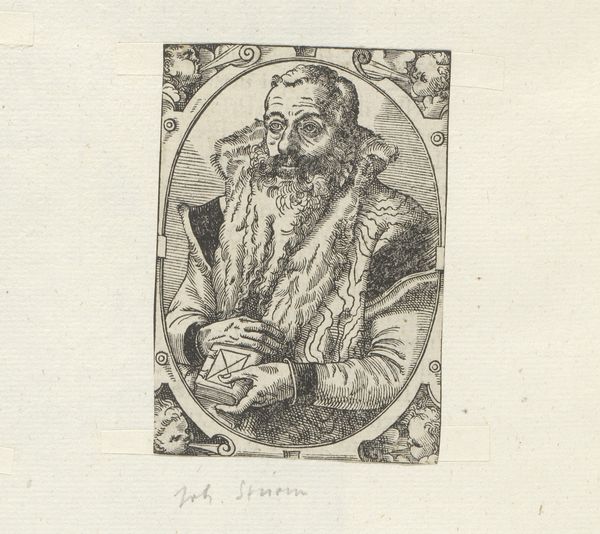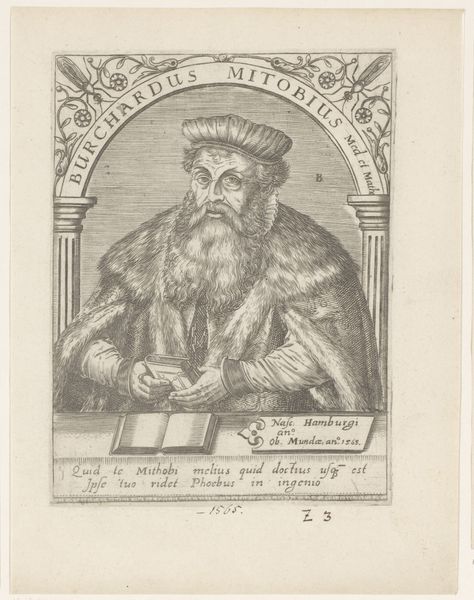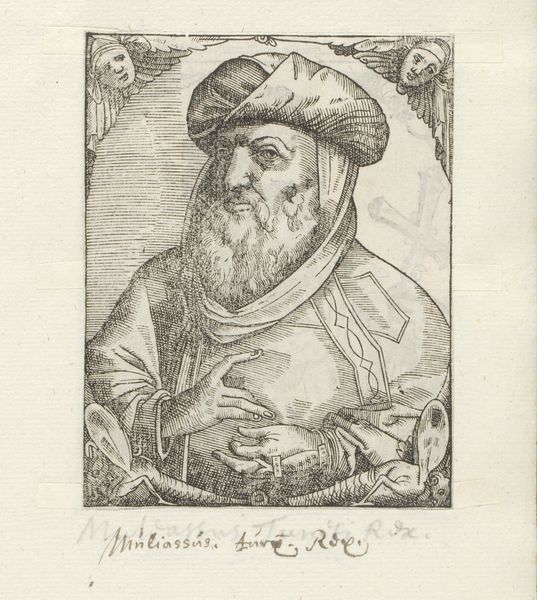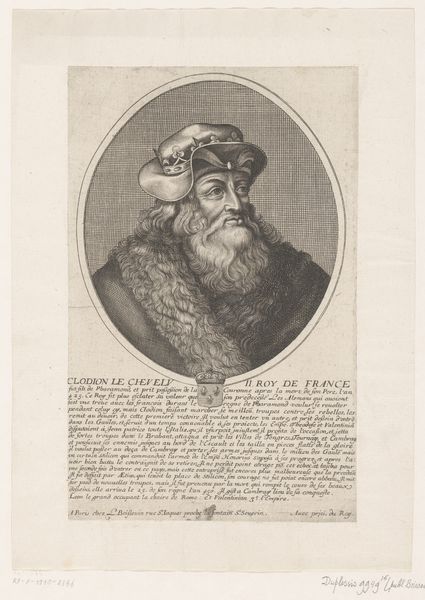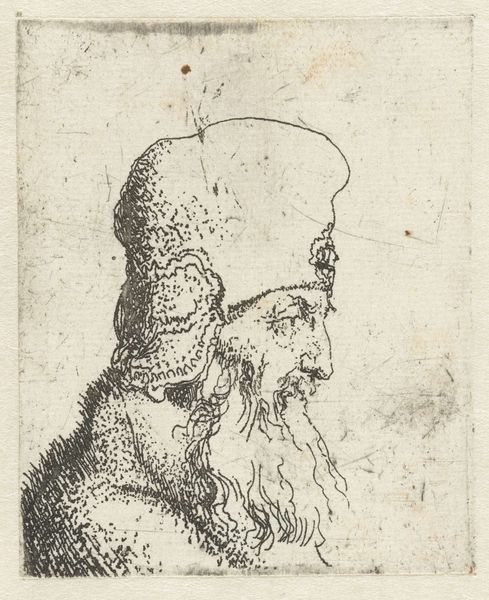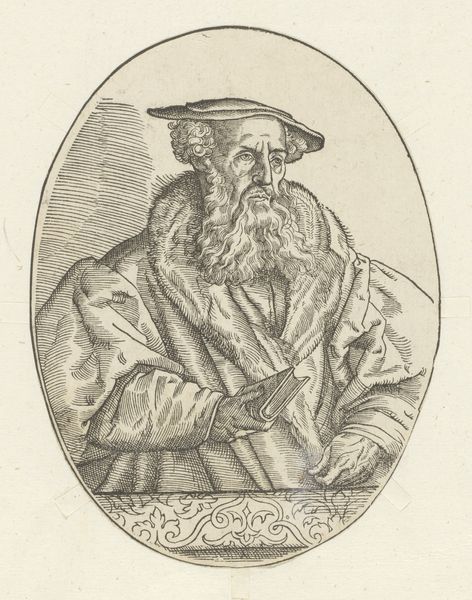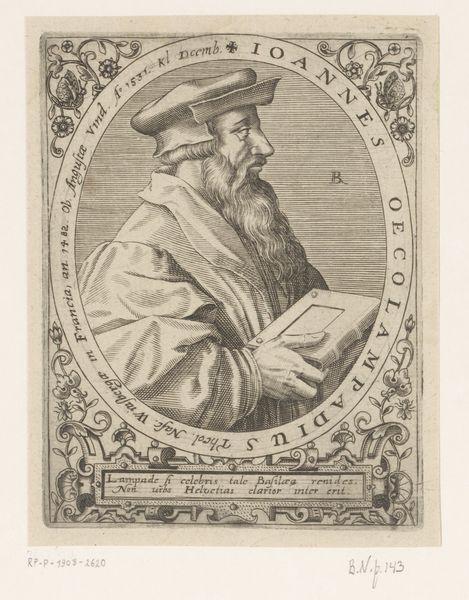
engraving
#
portrait
#
old engraving style
#
11_renaissance
#
history-painting
#
italian-renaissance
#
engraving
Dimensions: height 107 mm, width 85 mm
Copyright: Rijks Museum: Open Domain
Curator: Looking at this engraving, dating roughly between 1549 and 1575, we see a "Portret van Tuman bay II," attributed to an anonymous artist. The work stands as a testament to the enduring style of the Italian Renaissance. Editor: Immediately, I am struck by the sitter's profound gaze. He exudes power and perhaps a hint of melancholy. There's a lot happening in the face and very little softness; every stroke has impact. Curator: Precisely! And if we delve a bit into the historical context, Tuman bay II was the last Mamluk Sultan of Egypt before the Ottoman conquest. This print reflects a moment where East meets West, where identity becomes fluid in a world of empires colliding. The politics of representation here are central to our understanding. Editor: It's remarkable how this single image carries such weighty themes. How the clothing alone suggests the high-class status of the man being portraited and perhaps even communicates specific political or religious ideologies. In considering gender, race and class dynamics, is this a symbol of defiance against the cultural backdrop? Curator: That’s a fascinating proposition. It certainly challenges stereotypical European portrayals of non-Western figures from that period, doesn't it? The details in the turban and beard, though stylized, indicate an attempt to represent his likeness respectfully, complicating the prevailing orientalist narrative. Editor: The intricate frame bordering the image hints at a desire for something beautiful beyond the utilitarian function of commemoration. What would this piece have signified at the time to those who viewed it? Who commissioned such work, and where might it have been displayed? Curator: Those questions are pivotal. Examining the networks through which the artwork was distributed is crucial, revealing the subtle mechanisms by which narratives were propagated and perceived. We might consider the engraving itself a tool in the dissemination of power and cultural prestige, an early form of media if you will. Editor: Well, contemplating the legacy embedded within these lines has deepened my appreciation for this print's resonance. It has ignited a lot of avenues for further exploration. Curator: Agreed, an artwork can become an artefact that invites discussions surrounding our identity and cultural power.
Comments
No comments
Be the first to comment and join the conversation on the ultimate creative platform.
